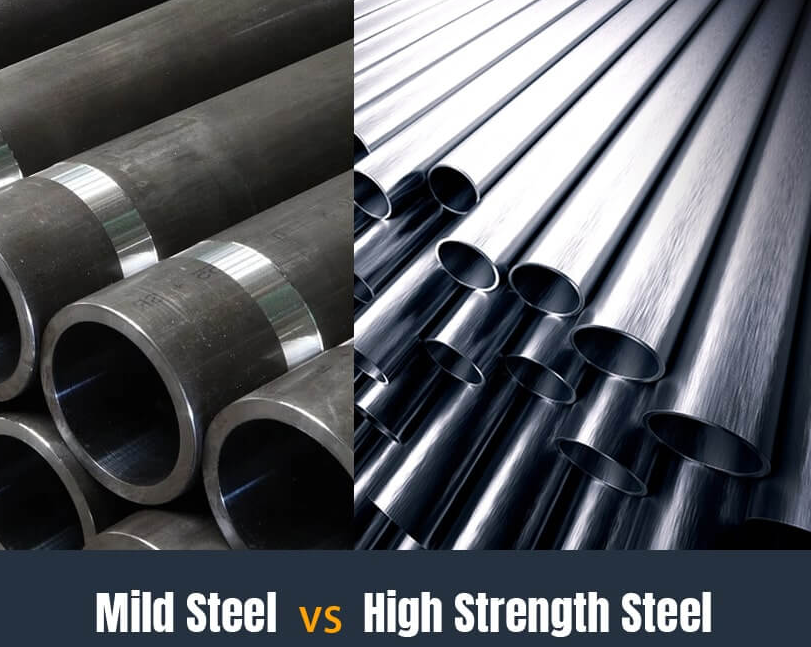Shaoyi :Unveiling the Power of High-Strength Steel
Introduction:
In the ever-evolving landscape of materials engineering, high-strength steel has emerged as a transformative force, reshaping industries and pushing the boundaries of what’s possible in manufacturing and construction. This blog of Shaoyi aims to unravel the mysteries surrounding high-strength steel (High strength steel – Abraservice), exploring its properties, applications, and the impact it has on enhancing structural integrity and efficiency across various sectors.

Defining High-Strength Steel:
High-strength steel, as the name implies, refers to steel alloys with significantly higher yield strength and tensile strength compared to conventional steels. These alloys are engineered to withstand extreme forces and offer exceptional performance under demanding conditions.
Properties of High-Strength Steel:
a. Yield Strength:
The most distinctive feature of high-strength steel is its elevated yield strength, providing enhanced resistance to deformation and permanent bending.
b. Tensile Strength:
High-strength steel exhibits superior tensile strength, making it capable of withstanding substantial pulling forces without undergoing plastic deformation.
c. Formability and Weldability:
Contrary to common assumptions, high-strength steel can maintain good formability and weldability, allowing for versatile applications in manufacturing and construction.
d. Reduced Weight, Increased Strength:
One of the key advantages is its ability to achieve higher strength with reduced material weight, leading to more efficient structures and components.
Types of High-Strength Steel:
a. High-Strength Low-Alloy (HSLA) Steel:
Combines low carbon content with small additions of alloying elements to achieve enhanced mechanical properties.
b. Dual-Phase (DP) Steel:
Combines a soft, ductile phase with a hard, martensitic phase, offering an excellent combination of strength and formability.
c. Transformation-Induced Plasticity (TRIP) Steel:
Undergoes a phase transformation during deformation, enhancing both strength and ductility.
d. Martensitic Steel:
Achieves high strength through a heat treatment process, forming a hard martensitic structure.
Applications Across Industries:
a. Automotive Industry:
High-strength steel is widely used in automotive manufacturing to reduce vehicle weight while maintaining structural integrity, leading to improved fuel efficiency and safety.

b. Construction and Infrastructure:
In the construction sector, high-strength steel finds applications in building structures, bridges, and other critical infrastructure, enabling the construction of lighter and more durable designs.
c. Aerospace Engineering:
The aerospace industry benefits from high-strength steel’s lightweight properties, contributing to the development of more fuel-efficient and high-performance aircraft.
d. Manufacturing and Machinery:
Machinery and equipment, ranging from agricultural machinery to industrial equipment, leverage high-strength steel for enhanced durability and reduced weight.

Challenges and Considerations:
a. Cost:
High-strength steel alloys can be more expensive to produce, requiring careful consideration of cost-effectiveness in various applications.
b. Processing Challenges:
Some high-strength steels may pose challenges during processing and fabrication, requiring specialized techniques and equipment.
Technological Advances and Future Trends:
a. Nanostructured High-Strength Steel:
Ongoing research explores the development of nanostructured high-strength steel, aiming to achieve unprecedented levels of strength and toughness.
b. Additive Manufacturing:
The integration of high-strength steel into additive manufacturing processes holds promise for creating complex structures with optimized strength-to-weight ratios.
c. Smart Alloys:
Innovations in smart alloys aim to enhance the adaptability and responsiveness of high-strength steel to varying environmental conditions.
Conclusion:
High-strength steel stands as a cornerstone in the evolution of materials science, unlocking new possibilities in diverse industries. Its unique combination of strength, formability, and reduced weight has revolutionized the way we approach design and manufacturing. As technological advancements continue to push the boundaries of what is achievable, high-strength steel is poised to play a pivotal role in shaping the future of resilient, efficient, and sustainable structures across the globe.
By electing to partner with Shaoyi, you can confidently use high-quality automotive components to bring excellent quality and long-term value to your vehicle.

